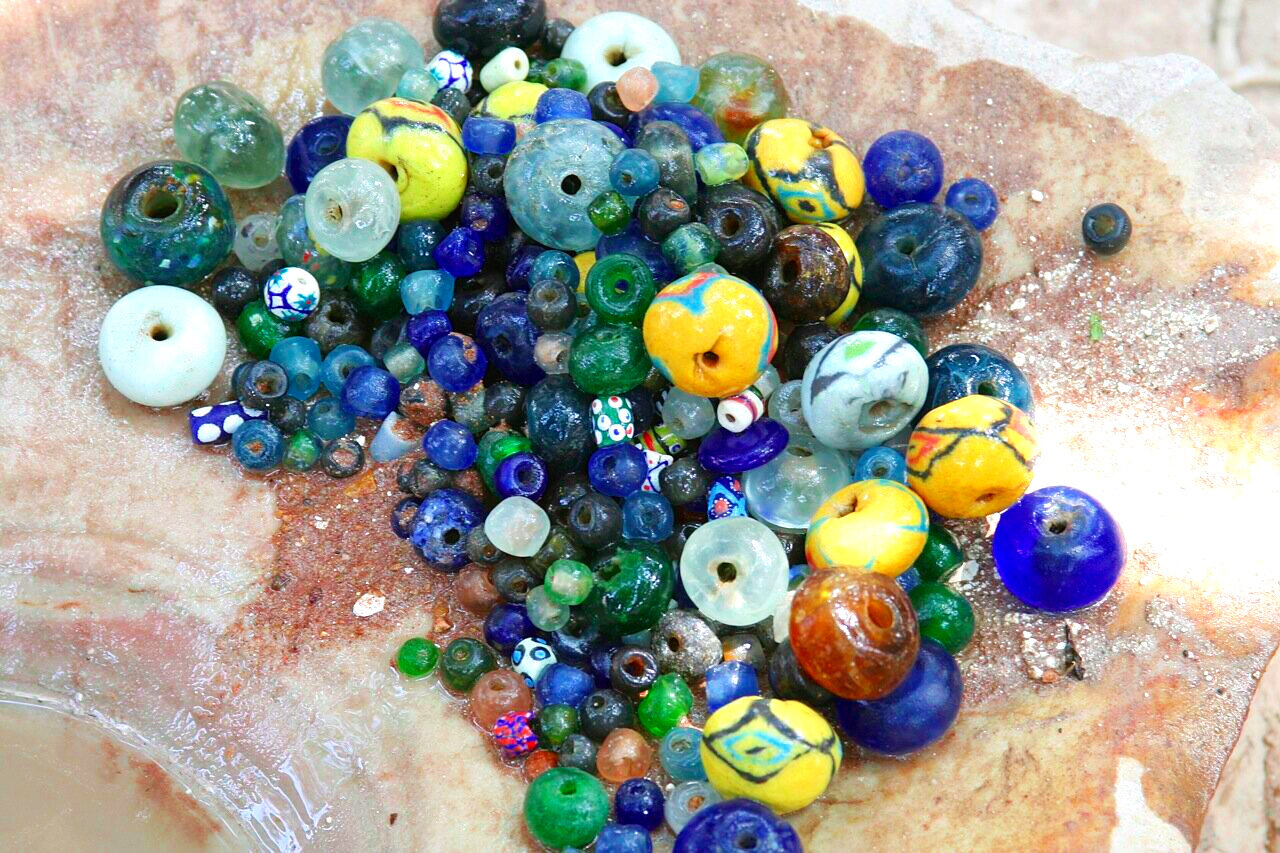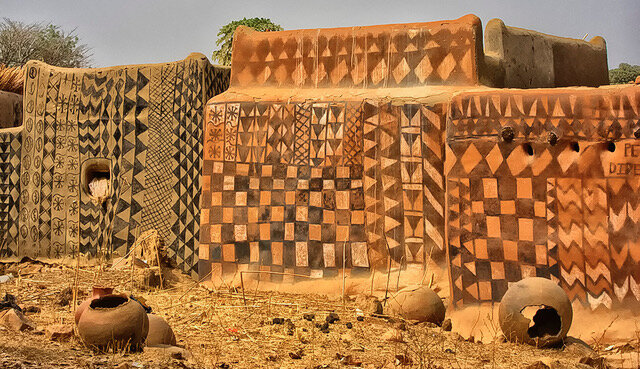
West African Village Architecture
Journey with a quest: Tiebele, a History Book in Clay (Symbols and Artisans)
From the rooftop, I gazed down at children sitting in front of a highly decorated house paying rapt attention to an elderly woman teaching them the history of their clan. She pointed to the geometric designs and figures of birds, snakes, fish, crocodiles, and herringbone patterns painted on the walls of the houses and walls separating compounds. I wondered what stories they told or magical powers they held. The houses were history books in clay.
Symbols and their meanings
The clan’s symbology is a language. Being animists, the clan believes that animals, plants, and even inanimate objects and natural phenomena possess a soul. Creation is represented by an ancestral couple who started the clan. It is believed that the Kassena people were originally from northern Ghana but migrated to southern Burkina Faso about four centuries ago, possibly to escape the slave traders. Fish scales refer to the clan’s migration from the border of northern Ghana to this location, a two-day walk from the Volta River. Here in their new environment, they survived on fish from the Volta River and as a result became expert fishermen. Today, they honor this sacred symbol in the form of a fishnet in their house designs. Each day the children gather and listen to the stories of their clan to understand the history of their people.
Ancestral couple who started the clan represented on the wall. Fish scales are a sacred symbol as fish from the Volta river saved them from starvation
Images of bats are good signs; bats eat mosquitoes, so when they inhabit the house, it’s considered good luck. Sparrow wings refer to the belief that sparrows can eat human flesh, so these birds are considered evil and are kept away from the village. The calabash is one of the most important objects; it was the first container of the gods, so it must never be broken. (That’s why calabashes are hung high up in macramé, away from children and from cats.) Images of calabashes are everywhere on the walls.
Scarification marks similar to those seen on the arms and faces of the people are also seen in the designs on the houses: the moon, the three cross-stitches representing the chicken for sacrifice, and the snake are considered sacred. They are therapeutic and keep away certain diseases.
Images include the snake, the supreme protective deity and a reincarnation of the grandmother, who after her death becomes the snake and must remain in the house. The turtle is the royal family’s emblem. Ants represent the social unity of the village and the work done by the women, especially painting their homes. Lizards and crocodiles are powerful symbols, as they protect the home from evil spirits. As protectors of the clan, panthers and turtles are never killed. Finally, my host told me that the symbols of the cane and the pipe are the ones visitors identify with. When a young person leaves the village to explore the world, he returns with a cane and a pipe to offer to the ancestors, confirming his safe passage back to his ancestral home.
Sparrow wings eating human flesh (only head shows), so these are evil.
The turtle, snake, and lizard are protective symbols.
Artisans: who they are and how they paint the houses
A caste of women painters records the clan’s history using painted symbols and carvings in low-relief clay. They first apply a paste of ashes, soil, and manure. Then, they add another coat of clay and manure. The last coat is a paste of water and red soil containing iron oxide and aluminum. The colors originate from volcanic stones that yield the color black; a calcareous powder, probably from limestone, that creates white; and cattle dung and powders from certain rocks that produce red. The colors are set using the bark of the flamboyant tree as a mordant. Because the women belong to this occupational caste, they do not engage in any other work in the village.
House painting is always preceded by a sacrifice. Then the villagers watch the wall for three days. During this time, a lizard must climb the wall; if not, the wall will be dismantled and rebuilt!
I left Tiebele knowing I had experienced something truly extraordinary.
Inhabitants of the Royal Court of Tiebele
Painter Tiebele
Crocodile symbol of protection









